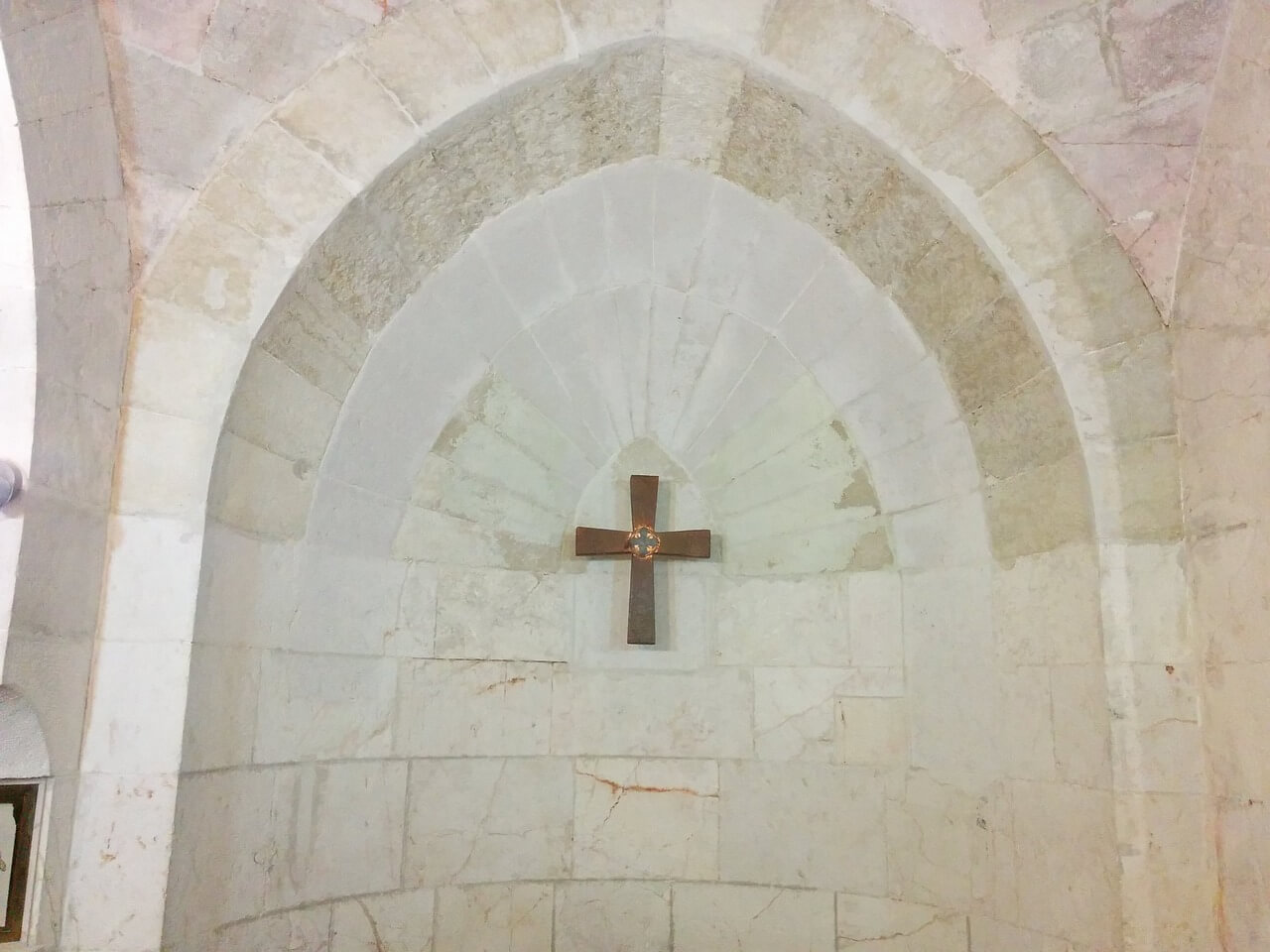By many accounts, a trip to Israel is a life-changing experience. After all, it’s one thing to read the Bible at home, and it’s another to join a Holy Land pilgrimage and relive the Gospel in the Promised Land. Described as a land flowing with milk and honey, Israel is the site of Christianity’s most important events. It’s where David defeated Goliath, where Solomon built his temple, and where conquerors sought to build and expand their empires.
More importantly, it’s where Jesus Christ lived, died, and rose from the dead. Israel is the birthplace of Christianity, which now guides more than two billion people’s lives. Many pilgrims attest, too, that after traveling to Israel, you’d never see the Biblical stories the same way again.
Here’s a guide to help you make the most of your visit to the Holy Land.
The Best Time to Visit Israel for a Pilgrimage
As with any trip, a pilgrimage to Israel is more pleasant during certain times of the year. Here are the three best seasons to do a Holy Land pilgrimage:
Spring
Springtime in Israel runs from March to May. Temperatures at this time range from 15°C to 25°C, so the weather is pleasantly warm. Spring also heralds flowers that blanket the hillsides and welcomes wildlife from hibernation. The season starts with a bit of rain, though. The crowds during March are relatively small but grows throughout the season. Around May, people celebrate the Israel Festival, which presents many dance, musical, and theatrical performances.
Summer
Summer runs from June to September. This is the peak travel season for Israel, and hordes of travelers fill tourist destinations and Jerusalem pilgrimage The weather gets very hot — temperatures range from 28°C to 32°C. The air is not as humid as that of the Philippines, though, so outdoor excursions are bearable. You can stroll about the city without worrying about rain. Summer is also the best time for a trip to the beach. A tip: always bring water and wear sunglasses (the off-white stone buildings produces glare). Cool yet modest clothing is a plus, and so are comfortable walking shoes.
Christmas
Celebrate Christ’s birthday at his Christmas in Israel is a one-of-a-kind experience. Manger Square, Bethlehem’s city center, holds magnificent Christmas services. You’ll be greeted by huge crowds, though, and temperatures can get chilly, ranging from 10°C-15°C. Prepare for heavy rains, too. Best pack umbrellas, pajamas, pants, and jackets.
Read more on the best seasons to visit Israel.
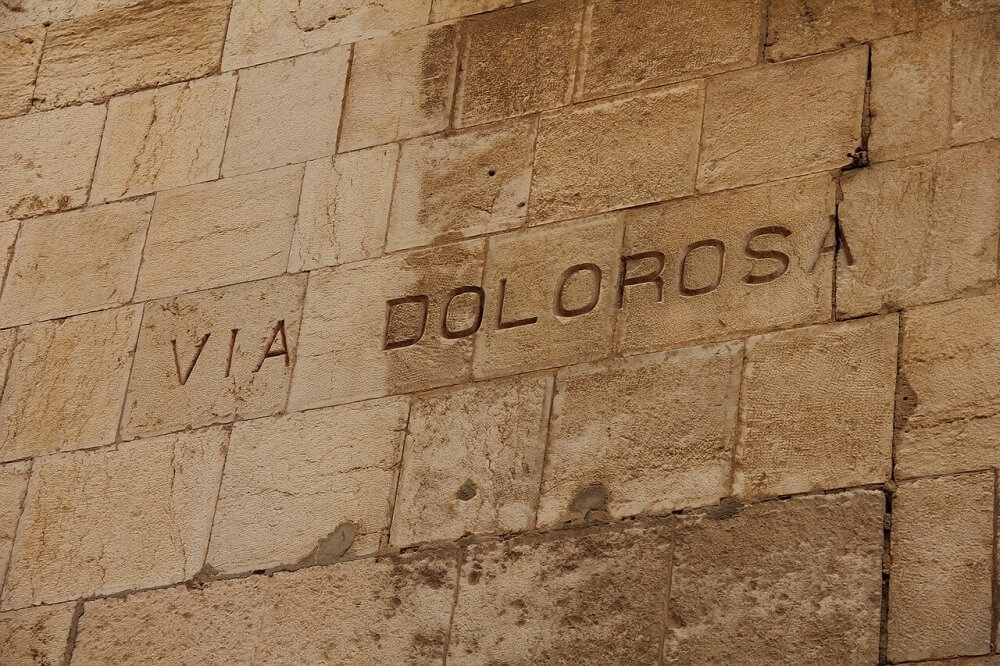
Sites for a Pilgrimage in Israel
Here are the holiest sites you should stop by on your Israel trip:
1. The Church of the Holy Sepulchre
This has long been a pilgrimage center for Christians. The church is built on the site of the Golgotha, (translated as “The Place of the Skull”) where Jesus was crucified, and his tomb, where he was resurrected. Over the centuries, it came under the care of Roman, Persian, Arab, and Byzantine leaders. Today, visitors can still see traces of the architectural legacy of these conquerors.
From April to September, the Church is open daily from 5 AM to 9 PM, except on Sundays, when it closes at 8 PM. From October to March, it’s open from 4 AM to 7 PM. Visitors of any religion are welcome. The church gets crowded, though, so you may wait in line for an hour to get in.
2. Via Dolorosa
One of the main destinations of a Catholic pilgrimage to Israel, the Via Dolorosa is a 500-meter route that traces Jesus’ journey from his condemnation by Pontius Pilate to his final resting place at the Church of the Holy Sepulchre. Every Friday afternoon (3 PM during October to March, 4 PM the rest of the year), Franciscan friars lead a procession that commemorates the 14 Stations of the Cross.
3. Capernaum
Also known as the Town of Jesus, Capernaum is where Christ recruited his first disciples, Peter, Andrew, John, James, and Matthew. He also performed many miracles here, like healing serious illnesses and possessions by the devil. Today, Capernaum contains ruins from ancient synagogues and villages. At the center stands a Franciscan church, which was built on the site of St. Peter’s house.
4. The Sea of Galilee
Although called a sea, the Sea of Galilee is a lake through which the Jordan River flows. Jesus spent a significant amount of his ministry around the lake. For instance, it’s where he calmed the storm in the presence of his disciples. It’s also where he walked on water and paid tax with a coin from a fish. Christian tradition also says the multiplication of loaves and fishes happened in the area.
Adventure seekers looking for a side trip to their pilgrimage to Israel can bike along the Sea of Galilee trail, which encircles the lake, or the Jesus Trail, which runs from Nazareth to Capernaum.
5. Mount of Beatitudes
Believers say that Jesus delivered the famous Sermon on the Mount on the slopes of the Mount of Beatitudes. Today, the beautiful Church of the Beatitudes stands on its slopes. The basilica has eight sides, symbolizing the eight Beatitudes. At its peak stands the Domus Galilaeae (House of Galilee), a Christian meeting place used for seminars and conventions. The mountain also offers glorious views of the Sea of Galilee.
6. Mount Tabor
Located about 15 km west of the Sea of Galilee, Mount Tabor is believed to be the site of the Transfiguration of Christ. It overlooks the fertile Jezreel plains, the site of many ancient battles, like those of Thutmose III, Alexander the Great, and Napoleon Bonaparte. It also has three major hiking trails with distances ranging from 2.5 km to 5 km. Atop its summit is the Church of Transfiguration.
7. The Valley of Elah
This is a plain located between the hills of Judah. According to the Christian tradition, this is where David defeated Goliath, the giant champion of the Philistines. The valley got its name from the terebinth trees that once grew abundantly in the area. Today, visitors walk through fields covered with sunflowers, red anemones, and multi-colored lupins. Take note, however, that not many Holy Land pilgrimages visit this site.
8. The Jordan River
The Jordan River contains the Qasr el Yahud, which is widely acknowledged to be the site of Jesus’ baptism. The remains of a Byzantine Church from the fourth or fifth century still stands nearby. The Qasr el Yahud has showers, facilities for prayer, wheelchair accesses, and parking spaces to cater to pilgrims who wish to be baptized in the same place as Jesus was.
9. Bethlehem
As the birthplace of Jesus, this little town has been a pilgrim center for centuries. It houses the Manger Square, the city square that holds magnificent Christmas services; the Mar Saba Monastery, a strict, fifth-century monastery; and the Milk Grotto, where the Holy Family took refuge as they fled to Egypt.
10. The Church of the Nativity
This is the oldest complete church in the Christian world, and it is built on the site of Christ’s birth. The church has no pews, but it is decorated with wall mosaics dating as far back as the 12th century. A passage to the right of the iconostasis (the carved screen in front of the main altar) leads to a dimly-lit rock cave that houses the Grotto of the Nativity. Pilgrims need to stoop low to enter, as the entrance is only 1.2 meters high. Under the grotto’s altar, a 14-pointed star marks the exact spot where Jesus was born.
11. Tomb of the Virgin Mary
Also known as the Church of the Sepulchre of Saint Mary, this houses the burial place of the Mother of God. It sits at the foot of the Mount of Olives and resembles the Church of the Holy Sepulchre. Inside, a small Edicule, richly decorated with candles and flowers, contains a large stone on Mary’s body is believed to have lain.
There are also niches dedicated to her parents, Saints Anne and Joachim, and her husband, St. Joseph.
12. The Garden of Gethsemane
Also located at the foot of the Mount of Olives, the Garden of Gethsemane is where Jesus prayed nights before he was crucified. This tranquil garden features magnificent, 2000-year-old olive trees that still produce olives. Experts aren’t sure if these are the exact trees Jesus prayed next to. If not, they’re definitely offshoots. The Grotto of Gethsemane is about a hundred meters away. A famous pilgrimage center in Israel, it’s a cave where Jesus and his disciples often camped out and prayed.
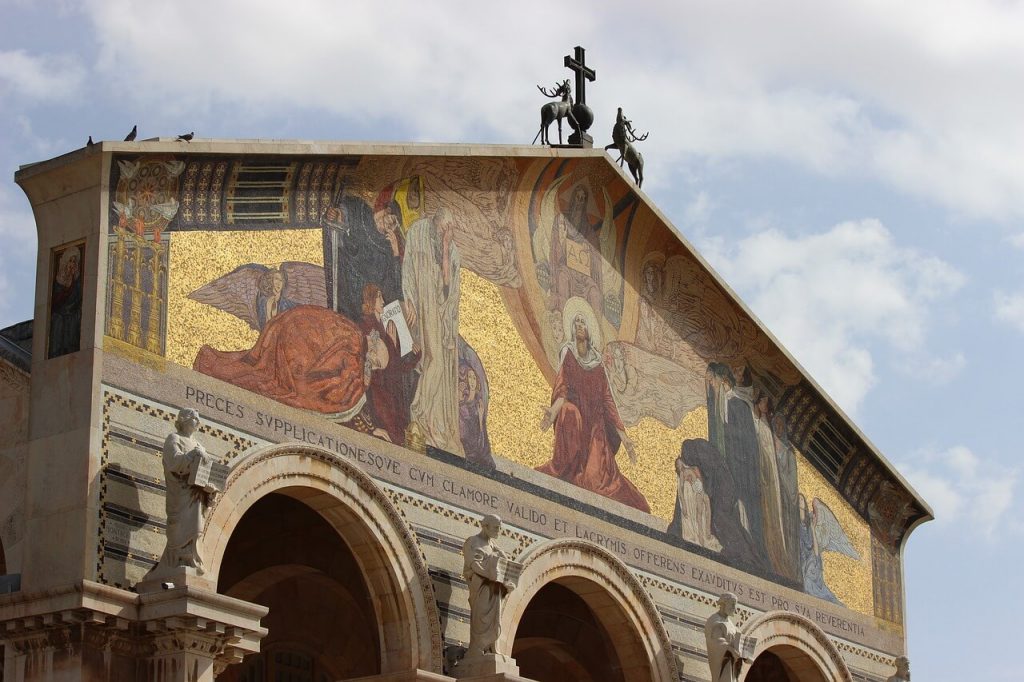
13. The Church of All Nations
The Church of All Nations, located beside the Garden of Gethsemane, houses a bedrock believed to have been the exact spot where Jesus prayed before his crucifixion. The church’s architect intentionally left the interior in semidarkness to reflect the emotions of Christ while he was there. Large mosaics decorate the interiors and depict the kiss of Judas, an angel consoling Jesus, and the arrest of Jesus. The church is also known as the Basilica of the Agony.
14. The Basilica of the Annunciation
The Casa Nova Street in Nazareth houses one of the most famous pilgrimage centers in the Holy Land — the Basilica of the Annunciation. It was built on the site believed to be Mary’s home, where the Angel Gabriel visited her and announced that she will carry the Son of God. The Basilica sports a modern architectural style and colorful decorations. It enshrines a sunken grotto, which contains the traditional cave-home of the Virgin. Here, a Latin inscription says, “Here, the Word was made flesh.” Remnants of churches from the Crusades and Byzantine era surround the grotto.
15. The City of David
This is a 3,000-year-old site built when King David left Hebron and settled in a small hilltop area now called Jerusalem. The City of David houses the Gihon spring, which has been the city’s water source for a thousand years. Visitors can see excavations of stepped stone structures about 60 feet high, believed to have been part of the king’s palace. It also covers the House of Ahiel, a typical, ancient, four-room house. Visitors can also trek through the 2,700-year-old Siloam tunnel that leads to the pool. The site holds tours that narrate how David united the Israelites in the Holy Land, Israel.
16. The Temple Mount
An elevated plaza believed to have been the site where Abraham took his son, Isaac, to be sacrificed. The site also once held an ancient Jewish temple built by Solomon. According to Islamic tradition, it is the site of Muhammad’s ascent to heaven. It contains the Al-Aqsa Mosque and the Dome of the Rock. Non-Muslim visitors are allowed in the Temple Mount, but prayer is forbidden.
17. Al-Aqsa Mosque
Topped with a silver dome, the Al-Aqsa Mosque is the biggest mosque in Jerusalem and accommodates up to 5000 worshippers. Al Aqsa means “the farthest,” in reference to Muhammad’s journey to heaven to receive instructions from Allah. It’s one of the holiest places in Islam, alongside Medina and Mecca. It’s not always a part of a Catholic pilgrimage to Israel, but non-Muslims are allowed They’re not allowed to pray, however.
18. The Dome of the Rock
People from all over Jerusalem can see the Dome of the Rock, especially its beautiful, golden dome. It’s built over the sacred stone where Muhammad ascended to the throne of God. Muslims consider it a shrine and not a mosque. A moon tops the dome, and multi-colored Turkish tiles adorn the exterior. Non-Muslims are not allowed inside.
19. The Western Wall
This is a part of a great Jewish temple built by King Herod in 20 BCE. When the Romans destroyed the temple in 70 CE, this portion of the wall survived. As a remnant of the ancient temple, it is one of the holiest places in the Jewish tradition. It’s open to visitors all day, even those on a Christian pilgrimage to Israel. It’s customary to write short prayers and leave the paper in the crevices of the wall.
For a full list of attractions to visit in Israel, read Main Israel Destinations and Attractions.
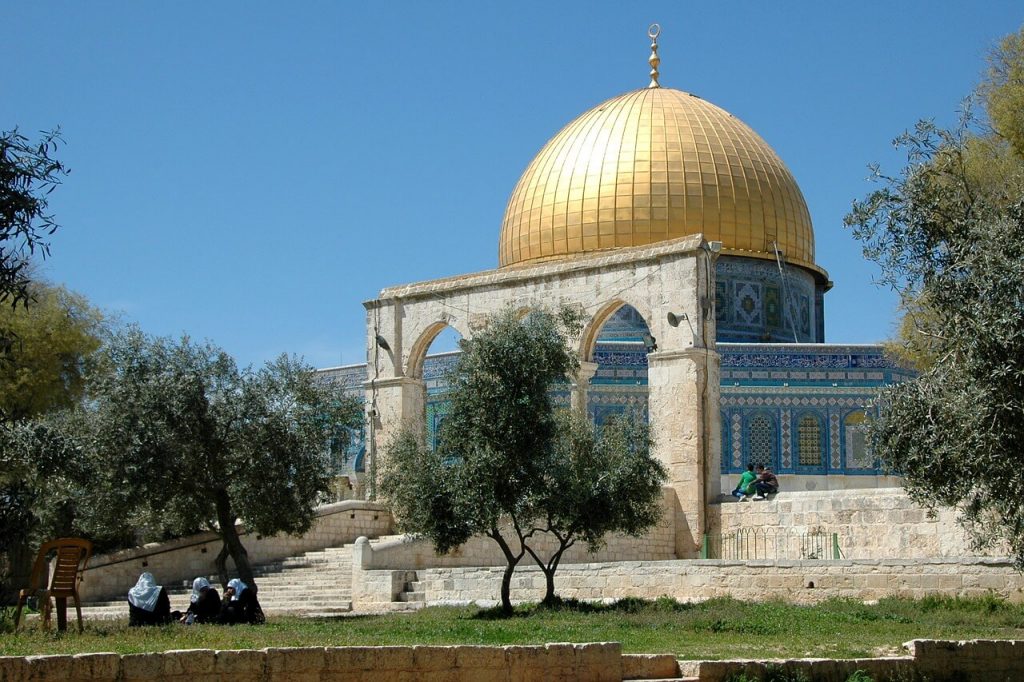
A Sample 10-Day Itinerary
With so many beautiful places to visit, creating your own schedule can be daunting if you’re not a part of a Holy Land tour from Manila. So, we created a sample itinerary that includes the must-see places in the country (with picturesque destinations in Egypt and Jordan, as well).
Day 1. Depart from the Philippines and arrive at Egypt, the Land of the Pharaohs. Explore the Hanging Church in Cairo, which is dedicated to the Virgin Mary and admire its 14th-century Nativity painting. Visit the Church of St. Sergius and Bacchus, which is built over a cave where the Virgin, Joseph, and the infant Jesus stayed during their flight to Egypt.
Day 2. Go back in time and visit Old Cairo, where the Pyramids of Giza and the Great Sphinx stand. Tour the Egyptian Museum, which houses Tutankhamen’s possessions and ancient Egyptian treasures.
Day 3. Head to the border town of Taba and cross to Eilat to enter the Holy Land, Israel. Drive to Jericho and visit the Mount of Temptation. Proceed to the Mount of Olives and see a panorama of Jerusalem. Say a prayer at the Ascension Chapel and the Church of Pater Noster.
Day 4. At the foot of the Mount of Olives, visit the Tomb of Mary, the Garden of Gethsemane, and the Church of All Nations.
Day 5. Proceed to the Church of St. Anne and then to the Temple Mount. Head to Via Dolorosa and walk along the route, which ends at the Church of the Holy Sepulchre. Then, cross the Old City of Jerusalem to the Western Wall.
Day 6. Go to Bethlehem and visit the Church of the Nativity, the Milk Grotto, and the Shepherds Fields. Then, explore Hebron. Say a prayer at the Church of St. John the Baptist and the Church of the Visitation.
Day 7. Visit the ancient city of Jaffa and explore its beautiful buildings. Drive to Caesarea, a port city with impressive archaeological sites. Visit the Carmelite monastery Stella Maris and head to Nazareth. Visit Mary’s Well, the Basilica of the Annunciation, and the Old Synagogue.
Day 8. Take a boat ride on the Sea of Galilee. Climb the Mount of Beatitudes and say a prayer at the Church of the Beatitudes. Head to Capernaum and explore the ancient archaeological site. Then, go to St. Peter’s Church, which stands on the apostle’s home.
Day 9. Celebrate mass at the Church of Transfiguration at Mount Tabor. Then, visit Jesus’ baptismal site at the Jordan River and head to the Qumran, where archeologists found the Dead Sea Scrolls. Drive to the Dead Sea and take a dip.
Day 10. Go back to Eilat and cross to Jordan via the Wadi Araba crossing. Visit the mountain fortress of Petra. Then, travel north to Amman and explore the Jordanian capital.
Tips for Traveling Israel
Before you join a pilgrimage to Israel, here are some items to pack and things to keep in mind.
Customs
It’s best to learn common Hebrew phrases. Even though a majority of the population understands English, you can show your interest in their culture by addressing them in the language of the land. Bring extra money because Israelis expect tips. When you’re at a market, always haggle — vendors expect you to do so. Prepare to smell like cigarettes, because Israelis smoke a lot (except on Sabbath). The country quiets down on Sabbath, so don’t expect a flurry of activity from Friday sunset to Saturday sunset. Lastly, bear in mind that Israelis are straightforward; sharp comments are common and shouldn’t be taken as a sign of ill will.
Adapting to Everyday Life
Bring electrical adapters. Buildings in Israel have a Continental European socket with two round pins or a Type H plug, which has three pins. If you’re not on a package Holy Land tour from the Philippines, download Moovit, an app that provides accurate bus and train schedules as well as directions around the country. There’s no Uber, too, so if you plan to take cabs, download Gett Taxi, the most famous taxi app in Israel. The currency is Shekels, which is divided into 100 Agorot. Notes come in 200, 100, 50, and 20.
Clothing
It’s advisable to pack a hat and sunglasses to protect yourself from the heat. Wear modest clothes, such as long-sleeved shirts and pants, when visiting holy sites. You’re going to do a lot of walking, too, so wear comfortable shoes.
Bag
Bring a small bag for day trips, especially if you’re going to the Dead Sea. Always carry drinking water. Israel is a dry country, so you can easily get dehydrated. Sunscreen and insect repellents are also useful items to keep in your tote.
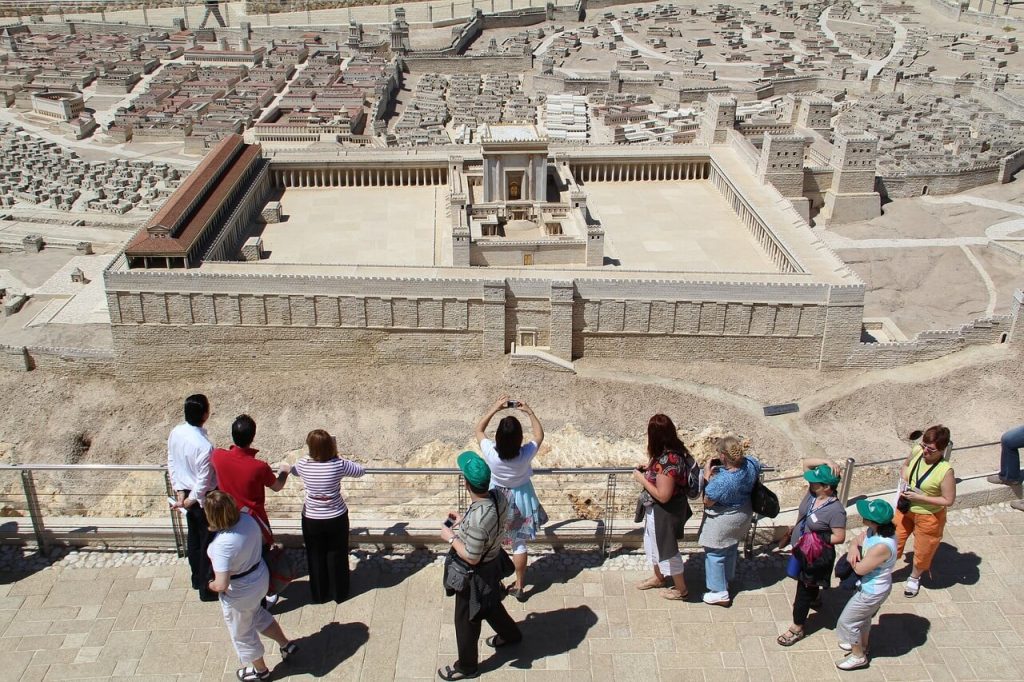
Holy Land Packages in the Philippines
If you want to join an Israel tour package from the Philippines, here are some trips you can check out:
- A Journey to the Holy Land (by Rakso Travel) – Twelve-day tours leaving on October 19, November 20, and December 18, 2018. It will begin at Amman, Jordan, go through Israel, and end at Cairo, Egypt.
- Holy Land Tour (by Pirkko & Troy Tours, Inc.) – A 12-day tour leaving on October 20, 2018. It will begin at Cairo, Egypt, traverse Israel, and ends at Madaba, Jordan.
- Holy Land Tour (by Covenant Travel and Tours) – A 12-day tour leaving on November 27, 2018. It will begin at Amman, Jordan, traverse Israel, and end at Cairo, Egypt.
- Christmas in the Holy Land (by Jordan and Egypt) – A 14-day tour leaving on December 20. 2018. It will begin at Amman, Jordan, travel through Israel, and end at Cairo, Egypt.
- The Holy Land Pilgrimage (by the Pilgrim’s Center) – A 10-day pilgrimage leaving on January 25, 2019. It will begin at Nazareth and end at the picturesque village of Ein Karem.
Christendom’s holiest sites are scattered across Israel. It’s the home of Jesus Christ, so it’s no surprise that many Filipinos want to see the place where the Faith began.
So, find the best tour package from Manila to Israel or go plan your own itinerary. Map out the best destinations, refresh your faith in God, and enjoy your trip to the Holy Land.

